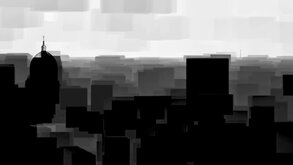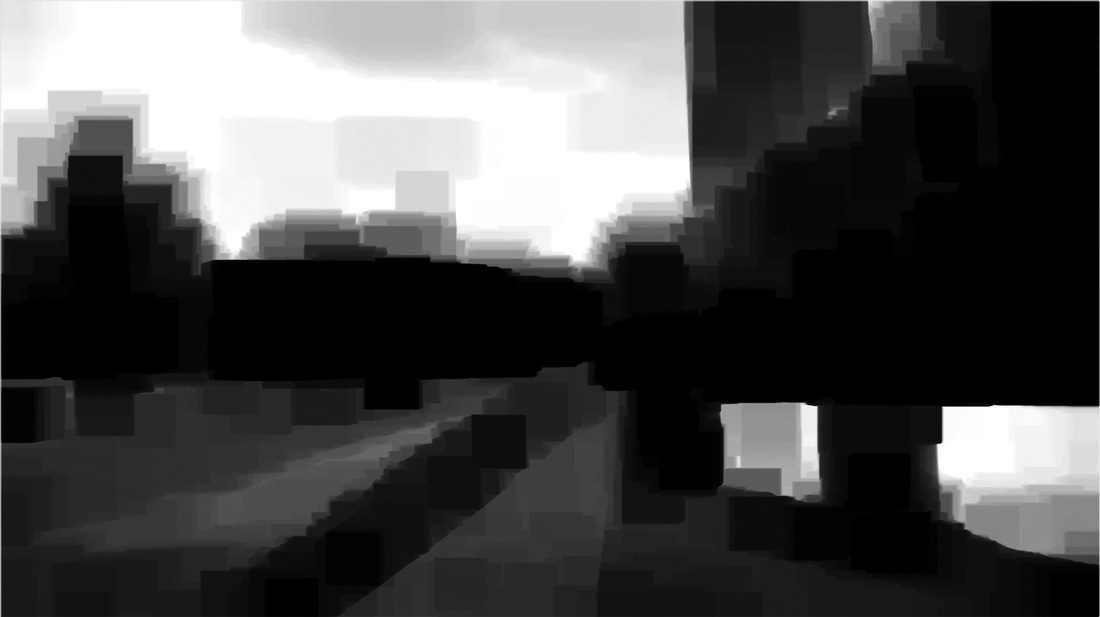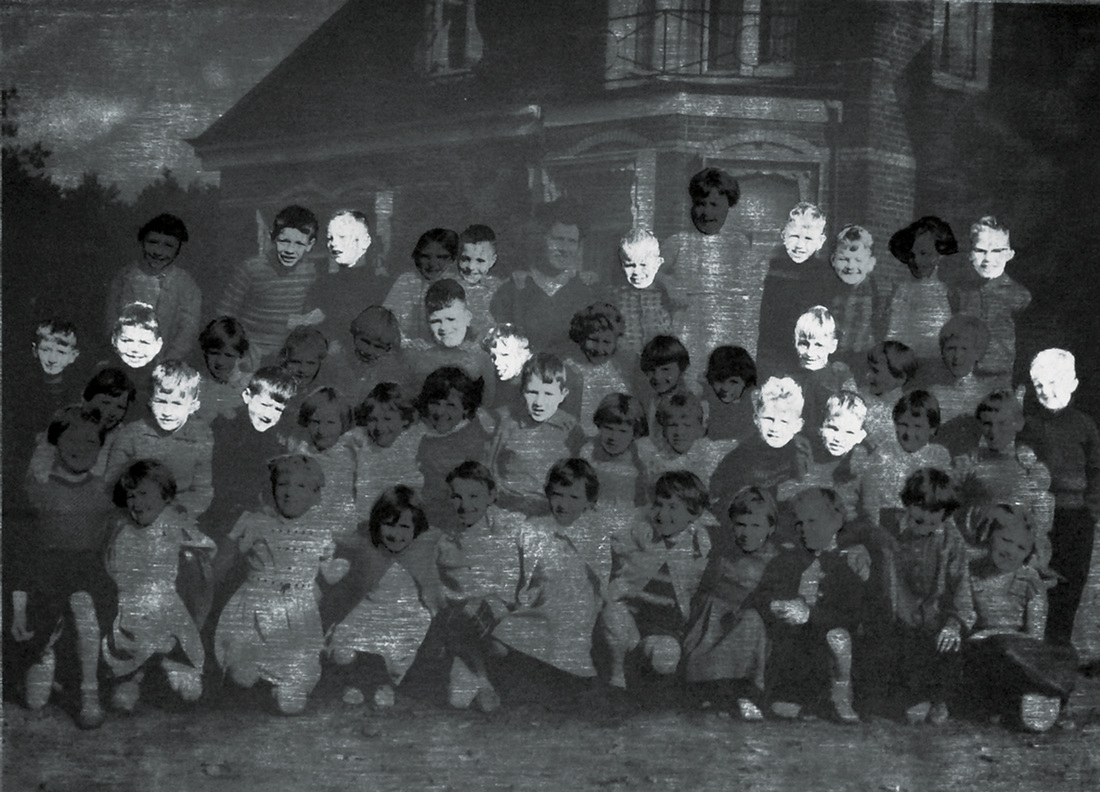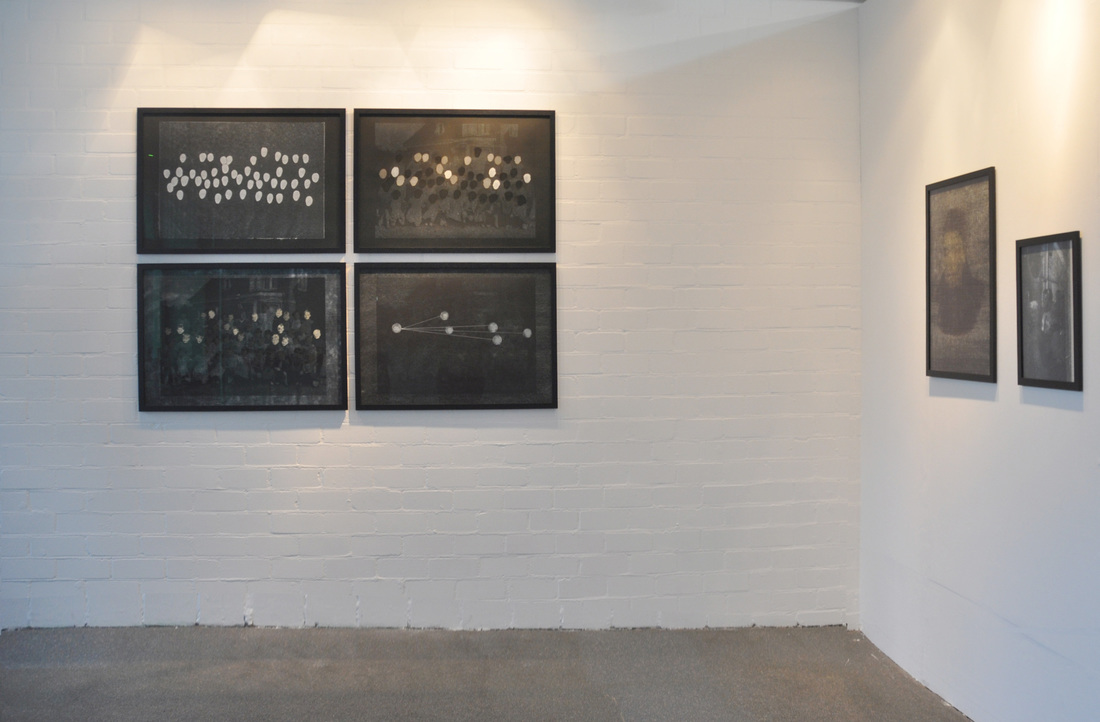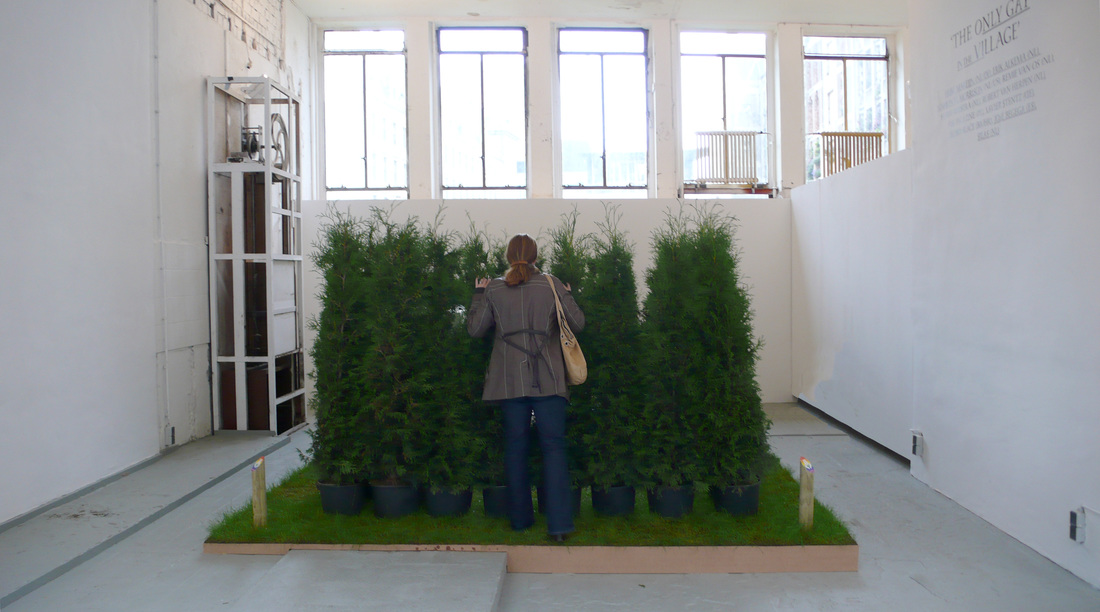Curbed Chaos. The Beauty Beneath (2020 edition), archival inkjet print, dimensions variable
|
The series Curbed Chaos. The Beauty Beneath depicts an unusual representation of everyday photography. By twisting their digital properties, the works conjure up a new reality; a reality that sidetracks our perception by mystifying the true nature of the original image. At first glance, the images are usually difficult to identify. Upon a closer look, familiar artifacts might be recognized. The series Curbed Chaos turns failure into an opportunity. A software glitch inspired the artist to develop a procedure that’s freeing him from the limitations of traditional photo editing and manipulation, resulting in a personal approach that rips off the identity of the original photo’s. Resulting in images that balance between reality and abstraction, distorting the notion of illusion and the real, inviting the viewers to enter an imaginary world, challenging them to charge it with a new meaning. Archival inkjet on Canson Infinity Edition Etching Rag 310gsm paper, dibond mounted, printed by the artist. |
Berlin Cathedral - View from Mühlendamm Bridge
Berlin Cathedral - View from Park Hotel
|
Requiem for a Falling Man (2017-2019), site-specific installation. Artist: Harm Weistra & Eddi Bal
|
The installation Requiem for a Falling Man pays tribute to the gay men, thrown off buildings by ISIS. The central focus is Echo of Falling Man, a reanimated execution of an unidentified Syrian. The animation can be seen as an afterimage. By mirroring the iconic Richard Drew photo of a ‘falling man’ jumping from the World Trade Center during the 9/11 attacks in New York, the work refers to the relationship between the Al-Qaeda attacks in New York and the terror ISIS spread in the Middle East.
The installation Requiem for a Falling Man is meant as a ceremonious farewell, not only for this unidentified Syrian but for all men and women who did not survive the terror of ISIS. The installation is a site-specific work that could consist of: Habituation. Rooftop View, archival print, polyptych 125 x 245 cm Echo of Falling Man, a vertically framed one channel animation, 2'24'' (screened as a loop) Requiem, a vertically framed three-channel animation, 2'58'' (screened as a loop) Wooden coffin boxes, tar painted, 40 x 55 x 180 cm Gold on black coffin cloths, screen-printed on fabric, 100x200 cm. Artist's impression (2019)
|
Requiem - triptych 16x9 (excerpt, 2019)Requiem for a Falling Man, installation view (2017)
|
8th Moscow International Biennale of Contemporary Art (2019/2020)
Echo of Falling Man (2017), Vertically framed one-channel Animation, 2'54'' loop. Artists: Harm Weistra & Eddi Bal
|
|
With the work Echo of Falling Man (2017), Harm Weistra & Eddi Bal ‘reanimate’ a still picture of one of the unidentified gay men, killed by ISIS by throwing them off buildings. The work can be seen as an afterimage, mirroring the iconic Richard Drew photo of a ‘falling man’ who jumped out of the World Trade Center during the 9/11 attacks in New York. A reference to the relationship between the Al-Qaeda attacks in New York and the terror of ISIS in the Middle East.
Echo of Falling Man (excerpt)
|
Family of Man (2017), Archival inkjet print, dimensions variable
|
The series Family of Man juxtaposes Weistra’s own photography with newspaper images of the war in the Middle East. The title refers to a 1955 MoMA exhibition, that aimed to present "a mirror of the universal elements and emotions in the everydayness of life”.
By appropriating and colliding found footage with images from his database, Weistra invites to reflect on the notion that our destiny is often closely related to where we were born. All works in this series: Archival inkjet print on Canson Platina Fiber Rag 310gsm paper, dibond mounted, printed by the artist. |
Hassle (2017), 90 x 270 cmFather, Father... (2017), 80 x 240 cmShooting (2017), 20 x 75 cm |
Carceri dei Danni Collaterali (2017), Archival inkjet print, dimensions variable
|
By merging multiple images of bombed and destroyed buildings in the Middle East, particularly Syria, the artist creates Carceri dei Danni Collaterali (Prisons of Collateral Damage). A title inspired by and referring to Giovanni Battista Piranesi's 16 famous prison etchings Carceri d'Invenzione (Imaginary Prisons) - 1745/1761. The Piranesi etchings followed a tradition called capriccio, fantasy aggregations of structures that did not exist in real life.
With his Carceri dei Danni Collaterali, Weistra creates contemporary "aggregations of structures" with footage found on the Internet. The results are photo collages of imaginary prisons assembled from photographs of bombed buildings in Syria. These collages are meant to draw attention to the harsh reality of the people in Syria, imprisoned among the ruins of what was once a thriving habitat. Press "The large inkjet prints of Harm Weistra are a blend of found footage of war and conflict. The photos show dramatic representations that cause confusion because of a dark gray photographic light and a mix of images. Weistra aims with this work to break through our daily consumption of (television) images to illuminate deeper layers of our existence." Source: Het Digitale Kunstmagazine Harm Weistra takes from the internet pictures of bombed areas in Syria and juxtaposes them to create an aesthetic and heavy atmosphere. The appealing photographs question the unconscious and stolid way we deal with images of wars and disasters nowadays. Source: Julia Flamingo at Artpool Blog |
Archival inkjet on Mediajet Museum Natural Silk 300gsm paper, aluminum mounted, acryl covered, printed by the artist.
|
Habituation (2016), archival inkjet print, polyptych 125 x 245 cm
|
The works in the series Habituation target the tipping point where images of conflict and war no longer leave traces in our mind. Although observed, the images aren't consciously perceived anymore.
The artist got intrigued, noticing his growing indifference, although initially overwhelmed by the cruelties in the Middle East. He found out that his disinterest is due to one of the most fundamental learning processes of biological systems. A mechanism of ignoring repeating stimuli that emerge too often. This so-called process of habituation allows to filter out large amounts of sensory information, so the focus can be on what's relevant and what really demands attention. The works Habituation. Rooftop View and Habituation, City View are created with found footage. With every newly added image, details of the previous ones are blacking out. Habituation, City View is constructed from images of bombed cities. Besides symbolizing a growing attitude of indifference. Habituation. Rooftop View is a reminder of the vulnerability of minorities in conflict areas. Referring to the deadly violence against the LGBT community in territories occupied by ISIS. Archival inkjet on Hahnemühle Photo Rag Bright White 310gsm paper, aluminium mounted, printed by the artist. |
Habituation. Rooftop View
Habituation. City View
|
Curbed Chaos; the Beauty Beneath (2014), archival inkjet print, dimensions variable
|
Curbed Chaos; the Beauty Beneath displays an unusual representation of everyday snapshots. By twisting their properties, the work conjures up a new reality. As a result, at first glance the images look familiar, but on a closer look it appears difficult to recognize, depicting a reality that sidetracks our perception and mystifies the true nature of the original image.
Curbed Chaos dissolves the distinction between failure and coincidence. A software glitch inspired the artist to develop a procedure that’s freeing him from the limitations of traditional photo editing and manipulation, resulting in a personal approach that rips off the identity of the original snapshot. It generates images that are balancing between figuration and abstraction, distorting the notion of illusion and the real, inviting the viewers to enter an imaginary world. By defamiliarizing the ordinary and exposing the audience to barely recognizable traces of everyday sceneries, the artist is challenging them to charge the images with a new meaning. |
Archival inkjet on Hahnemühle Photo Rag Bright White 310gsm paper, aluminium mounted, printed by the artist.
|
Parametric Family (2009 – 2013), mixed media on paper, dimension 59 x 80 cm (each)
|
Parametric Family refers to a concept from mathematics, being a set of objects that have one or more parameters in common. The series Parametric Family consists of four works, each portraying this concept; depicting that these families aren't static, but gradually evolving, like in a group of children in primary school. The first picture represents their only common parameter when being novices: being 'blank slates' for each other. The second represents the first steps in differentiating, in being aware of differences, mostly still on an unconscious level. The third picture represents differentiation coming to the surface, becoming aware on a more or less conscious level. The fourths picture represents clear preferences, creating individual 'parametric families' and resulting in 'defacing' all others.
Together the four pictures represent a metaphor for growing up, for losing innocence, and for developing an individual identity. |
Where I come from, but hardly know (2009-13), mixed media on paper
Intrinsic Moral Evil (2013), short film. Full HD, duration: 10’45’’
|
Intrinsic Moral Evil seems to be a tale of identity and coming of age. Is it about losing friendship, is it about growing up? The layered story gradually develops; revealing its last secrets just before the end credits start. Inviting the audience to make its interpretation.
The film touches on the theory of the French philosopher Foucault. Foucault rejected the idea that a human being has a fixed identity. He considered identity as a temporary construction, expressed in one’s interactions with the other. Identity as a way of talking about the self. Intrinsic Moral Evil plays with this concept and with that with the viewer’s perception and expectations. A voice-over and postscript serve as a foundation for the story and positions it in the context of the value system of Christianity, reflecting the ongoing debates to which extent men may follow his nature and to which extent society can force minorities to live by what the majority considers as acceptable. But at the end, it's as well a story about growing up, searching for identity, coming of age and freeing oneself from the imposed ideas about how to live one's life. |
Hidden Hatred (2011), wall sculpture, silkscreened black panels, dimensions variable
|
Hidden Hatred is a visualization of the research that underlies the video Damaged Goods. For the video, a small selection of the comments found on the Internet has been articulated by two voice actors. For the wall sculpture, a broader range of collected comments, shaped as contemporary poetry, have been screen-printed - black on black - on panels. From a distance, the texts hardly can be seen. As the sculpture's aesthetics invite the public to come closer, the work gradually reveals its potentially offensive messages.
Based on the subject and approach, Hidden Hatred could be seen as a reference to 'Four Questions' (1994) by Mark Simpson, the late US artist and a member of the Gran Fury Movement. |
Damaged Goods II (2012), video installation. Full HD, duration: 3’30’’ (loop)
|
The installation Damaged Goods II consist of a three-channel video, parabolic speakers and a LED scroll display. This installation is based on the video Damaged Goods (2011) and has been made in cooperation with VJ and video artist Eddi Bal. Like the underlying video Damaged Goods, this installation takes user generated (written) comments - posted on the internet and in dialogue articulated by two voice actors - as its starting point. These comments are addressed against the gay community and in this installation contrasted with the intimacy of two male dancers. The comments guide their movements and gradually influence to what extent they dare to live their life.
|
Upsetting ... (2011), one-channel video. Full HD, duration: 3’31’’
|
The video Upsetting ... focuses on hatred and violence against the LGBT community. Its audio is circling around the mantra 'It Gets Better', based on excerpts of the statements celebrities have posted on YouTube. The images of Upsetting ... are carefully compiled from video footage found on the internet.
Upsetting … originally was meant as a diptych with the video Damaged Goods. Upsetting ... is based on video footage, the most visible part of YouTube, where Damaged Goods reflects the lesser known, more hidden part of YouTube: the user generated comments. Since Damaged Goods travels the world stand alone, the video Upsetting …. is under construction. References to Damaged Goods will be replaced, and the video will be updated, to reflect the latest developments in violence and hatred against the LGBT community. |
Cruising Area 2.0 (2011), installation, dimensions variable
|
Cruising Area 2.0 is a proposal for an art project in public space that's questioning the legitimacy of outdoor sex. The work is a response to a political initiative to mark out a Rotterdam gay cruising area. Cruising Area 2.0 can be seen as a hyperbole of a future, where the gay community is forced between the boundaries the majority dictates as acceptable. By that, this work typifies a next step in domesticating gay male, and moreover characterizes in general that minorities are tolerated, as long as their behavior is following what the majority considers as acceptable.
Cruising Area 2.0 has been realized indoor at Project Space Roodkapje in Rotterdam (July/August 2011) and outdoor at 24 Uur Cultuur in Rotterdam (September 2011). |
Damaged Goods (2011), one-channel video. Full HD, duration: 3’52’’
|
Written comments - posted on the internet and in dialogue articulated by two voice actors - are the starting point of the video Damaged Goods. The comments seem to guide the movements of two male dancers, ultimately influencing the extent to which they dare to live their lives. The contrast between the comments and the intimacy of the dancers invites the viewer to reflect and to take a stand. Although the video seems to focus on the gay community, it has a broader relevance, in the sense that it shows the impact of the internet and social media in forcing individuals to live their lives within socially acceptable boundaries. Damaged Goods can be understood as a metaphor for the mechanism of oppression of minorities. In retrospect – the video is an early warning for the negative impact social media potentially have on the lives of those who are deviating from what is considered the norm.
|

